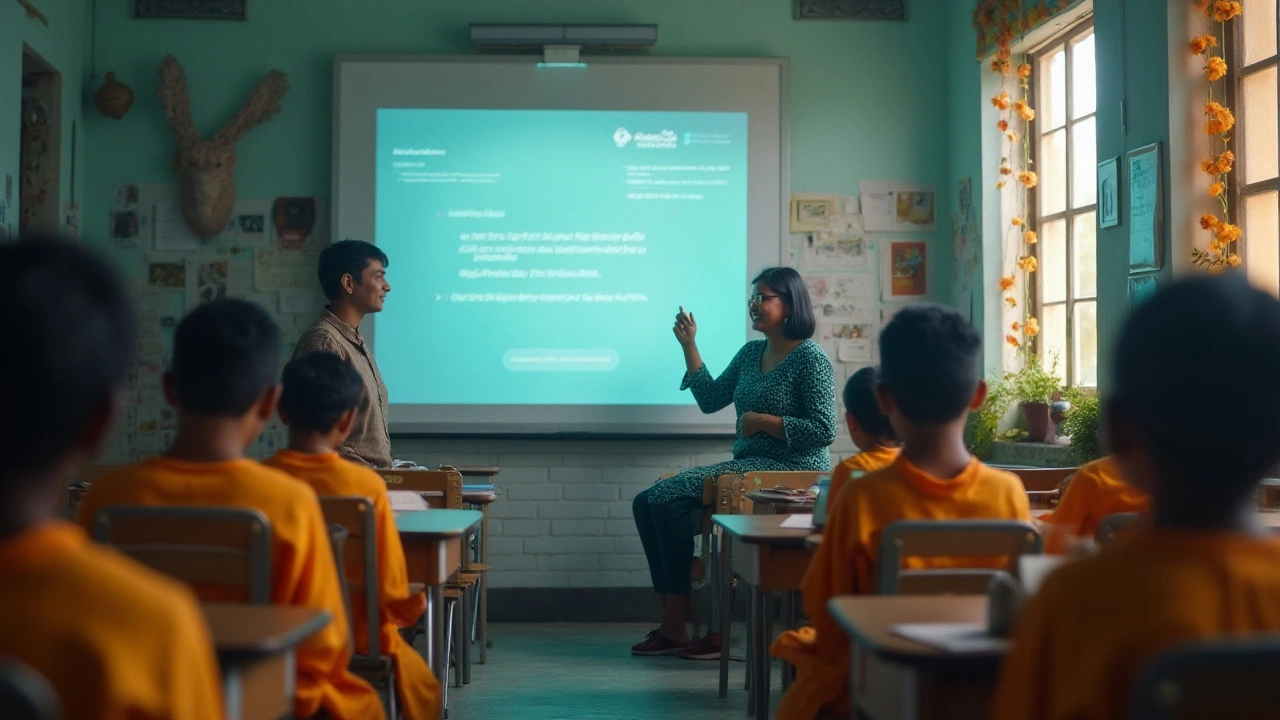
Codecademy has established itself as a popular platform for those looking to learn coding and programming skills, thanks largely to its user-friendly interface and interactive approach. Many aspiring coders often wonder about the costs associated with accessing Codecademy’s extensive course offerings.
But is it truly free to use? Well, this article seeks to answer that question by exploring the types of courses and resources Codecademy offers at no cost. While diving into the intricacies of their free courses, it's crucial to understand what's available and how to make the most of these options without spending a dime.
- Understanding Codecademy: What Does Free Mean?
- Exploring Free Courses and Resources
- Limitations of Using Codecademy for Free
- Maximizing Free Learning Opportunities
Understanding Codecademy: What Does Free Mean?
To understand what free means in the context of Codecademy, it’s pivotal to start by defining what the platform offers to its users. Codecademy is widely regarded for its stance on accessible and comprehensive learning experiences facilitated through an interactive and digital setting. They have a well-curated catalog of courses that cater to a spectrum of learners, from newbies to seasoned coders looking to brush up on particular skills. The question that often arises is whether someone can truly learn these valuable skills without incurring any cost. The answer lies in the foundational aspects of Codecademy’s model that allow learners to access a selection of courses without payment.
Codecademy allows free access to several of its programming courses, primarily targeting fundamental skills in languages such as Python, JavaScript, and HTML/CSS—languages that form the backbone of modern programming. This rabbit hole of free content is designed not just to test the waters but also to furnish substantial foundational knowledge upon which to build a career in technology. These courses are structured to provide hands-on experiences with coding exercises that reinforce learning with each session. However, knowing the limitations of what’s free is equally important, as is understanding the valuable options that lurk behind a paywall.
The free tier is notable for its substantial content, but it does come with its own set of boundaries. While free users have the advantage of access to basic lessons and exercises, the paths to more advanced content remain restricted. Interactive projects, real-world scenario exercises, and certifications are features typically reserved for Codecademy’s Pro users. This two-tier approach strategically aligns with the philosophy that users might initially learn the basics for free, and then decide if a more robust, comprehensive learning journey is worth investing in through a paid subscription. In fact, according to many user reviews, the free content, albeit limited in complexity, is more than sufficient for people trying to dabble in coding for personal growth or leisure learning.
“The free resources offered by Codecademy provide an excellent starting platform for individuals eager to engage with the basics of coding without initial financial commitment.” – TechEducators MagazineMoreover, Codecademy often blends its free resources with community forums where learners can interact, provide peer support, and exchange constructive feedback. This social aspect can be integral to the learning process, providing free users an additional layer of interaction that simulates real-world collaborative environments found in professional tech settings. It’s not just about viewing what’s free through the lens of course content, but also realizing the value of being part of a vibrant learning community.
To completely comprehend what free access affords, the following table provides a clear comparison of what free and pro tiers have to offer:
| Feature | Free Access | Pro Access |
|---|---|---|
| Basic Courses | Yes | Yes |
| Interactive Quizzes | No | Yes |
| Step-by-Step Guidance | No | Yes |
| Certifications | No | Yes |
Understanding what free entails on Codecademy is not just about the availability of resources, but also about recognizing the pathways to expand this foundational knowledge. Users can maximize the free tier by thoroughly exploring introductory courses, participating in community forums, and deciding if, in due time, advanced courses may necessitate a subscription. Making the initial progress through free channels is not only possible but also incredibly beneficial for those committed to self-guided learning.

Exploring Free Courses and Resources
Codecademy holds a special place for those who are eager to dive into the world of coding without immediately opening their wallets. The platform's free-tier offerings have attracted thousands due to its accessibility and diversity in programming languages. Newcomers to the platform are often pleased to discover a set of free courses that provide a clear, interactive pathway into several programming languages, including Python, JavaScript, and Ruby. Each course begins with basic definitions, engaging explanations, and real-world problem-solving examples, making the learning experience as smooth as possible for even the most novice user.
A noteworthy aspect of Codecademy is their free resources. The initial free courses are designed to give students a taste of coding by allowing them to engage with various foundational topics rather effortlessly. While the advanced subjects might be locked behind premium memberships, there's still a plethora of valuable materials available for free. These courses include interactive lessons and exercises, which encourage hands-on learning, and utilize instant feedback to keep learners on track. New users often find themselves rapidly gaining confidence through this approach, as they see real-time results of their coding efforts.
Aside from structured courses, Codecademy supplements learner experience with a wealth of additional free resources, such as community forums, a blog rich in industry insights, and bitesize challenges that reinforce key concepts. It's these resources that often help solidify knowledge gained during courses and provide learners with the chance to interact with peers for collaborative learning. A tip to maximize these offerings is to engage actively in forum discussions, as they often prove invaluable for exchanging ideas and clearing doubts.
Many individuals attribute their successful entry into tech sectors to Codecademy's robust starting point provided by free courses. A survey conducted in 2022 revealed that over 60% of Codecademy users were able to transition into entry-level programming positions after completing free and basic tier courses, showcasing their impact.
"Codecademy’s free courses prepared me for real-world coding challenges," explains a satisfied user in a recent survey, emphasizing the platform's role in his professional growth.

Limitations of Using Codecademy for Free
When diving into the realm of free courses on Codecademy, it’s essential to keep one's expectations in check. Although the platform offers a variety of free resources, these come with certain limitations that learners should consider. The first significant limitation is the accessibility to a complete course catalog. Many advanced courses and popular tracks are locked behind a paywall, reserved for those who opt for the Pro subscription. This means free users might miss out on some of the more popular or specialized subjects, such as intricate web development frameworks or data sciences. Without access to these advanced courses, learners might find themselves hitting a plateau in skills growth.
Another limitation relates to the depth of content coverage. Free courses on Codecademy provide only the foundational steps in learning a skill. For someone who is serious about mastering a topic, the platform might provide them only with a base from which to learn. Without the full spectrum of in-depth projects and assessments that Pro users enjoy, there is often a struggle in applying learned concepts in real-world scenarios or understanding their practical importance. This lack of depth can result in an incomplete understanding of the material, which ultimately can restrict a learner's job market readiness.
Furthermore, the absence of personalized learning paths is worth noting. While Codecademy does a fantastic job of offering structured courses, free users don't benefit from personalized feedback or individualized course suggestions that cater to their strengths and weaknesses. Pro users, in comparison, have the advantage of quizzes, tailored recommendations, and personal analytics that help tailor the learning process. Without these features, free users might find it challenging to efficiently navigate through Codecademy's offerings in a way that maximizes their learning potential. Expert guidance is key, and without it, some learners might find themselves stuck without a clear direction.
"While free access to Codecademy offers a great initiatory step into programming, a Pro account opens up innovation through real-world projects and comprehensive paths," says Jessica Chan, a seasoned software developer and coding educator.
Let's not forget the community and support aspect. Inherently, Codecademy’s free users might feel isolated in their learning journey, as they lack full access to forums and community hubs. There is often limited interaction and exchange of ideas, which can make self-directed learning less dynamic and engaging. Additionally, without official support or assistance from seasoned instructors that Pro users benefit from, troubleshooting issues can sometimes result in frustration and a slower learning pace. Many learners find that interaction with peers and instructors significantly enhances the educational experience, providing insights that exceed textbook knowledge.
Conclusion
Indeed, Codecademy's free courses offer a valuable opportunity for budding programmers to dip their toes into the coding world. However, as with every offering, it does come with strings attached. The ultimate choice boils down to individual goals and commitments – whether they’re satisfied with foundational knowledge or if they'd rather invest in comprehensive, guided, and interactive learning experiences. For those keen on maximizing their free learning path, mixing Codecademy with other free resources and study practices might be the way to go.

Maximizing Free Learning Opportunities
Embracing the myriad of free courses offered by Codecademy can be an enlightening journey for anyone eager to venture into the world of programming and coding. While the platform offers several paid options, there are still numerous ways to maximize learning without spending a penny. The first step is understanding the breadth of courses available in the free tier. Codecademy provides free access to a selection of beginner courses, such as the introductory lessons in languages like Python, HTML, and SQL. Engaging with these courses allows learners to build a foundation strong enough to take on more challenging projects. However, sticking to free courses requires discipline and creativity to ensure the learning curve remains steep and rewarding. One effective strategy is to complement these courses with open-source resources found online, which can broaden the learning spectrum considerably.
Diving deeper, it's beneficial to make use of Codecademy's community forums. This is a bustling space where learners worldwide share tips, provide support, and discuss issues they face while learning. By actively contributing to these discussions, one can gain invaluable insights that enhance the learning experience. Moreover, participating in coding challenges—often shared within these forums—helps reinforce knowledge gained through Codecademy's courses. Learners can also reach out for peer reviews, a practice that not only solidifies one's understanding but also introduces one to different problem-solving approaches.
Setting a Learning Routine
Establishing a consistent learning routine is another way to optimize learning through Codecademy's free tier. It is advisable to set aside dedicated time blocks daily to work through course material. Consistency does wonders for retention and confidence, especially when embarking on self-paced learning journeys. Start each session by reviewing previous lessons, which reinforces the material and primes the brain for new content. Codecademy's interactive exercises ensure that regularly practicing concepts becomes an engaging task rather than a chore.
"Learning to write programs stretches your mind and helps you think better, creates a way of thinking about things that I think is helpful in all domains," said renowned computer scientist Bill Gates.
Once you're comfortable with a language or a concept, seek out additional free projects that push the boundaries of what you've learned. Websites like GitHub can serve as a springboard for practical application of newly acquired skills. Engaging with real-world projects not only boosts confidence but also builds a portfolio showcasing your capabilities.
Utilizing Codecademy's Free Events
In addition to static courses, Codecademy hosts webinars and events that are often free to attend. These sessions provide opportunities to learn from industry professionals and experienced developers directly. Attending these events not only keeps you updated with the latest technological trends but also opens doors to network with peers and mentors in the tech industry. Although accessibility to some webinars may require a paid subscription, Codecademy challenges and events occasionally circumvent this restriction, allowing all users to participate. Taking advantage of these events is a hands-on way to reinforce learning and keep motivated throughout the journey.
Lastly, keep track of your progress in a more structured format by creating personalized notes and flashcards. This classic method of studying has transitioned well to digital platforms and remains one of the most effective ways of ensuring the long-term retention of information. Utilizing variety in your study methods—ranging from digital flashcards to traditional paper notes—ensures that you remain engaged, stretching cognitive limits in ways that passive reading cannot achieve. With the right strategies and a willingness to explore additional resources, mastering programming using Codecademy's free tier becomes both achievable and rewarding.
Leave a comments